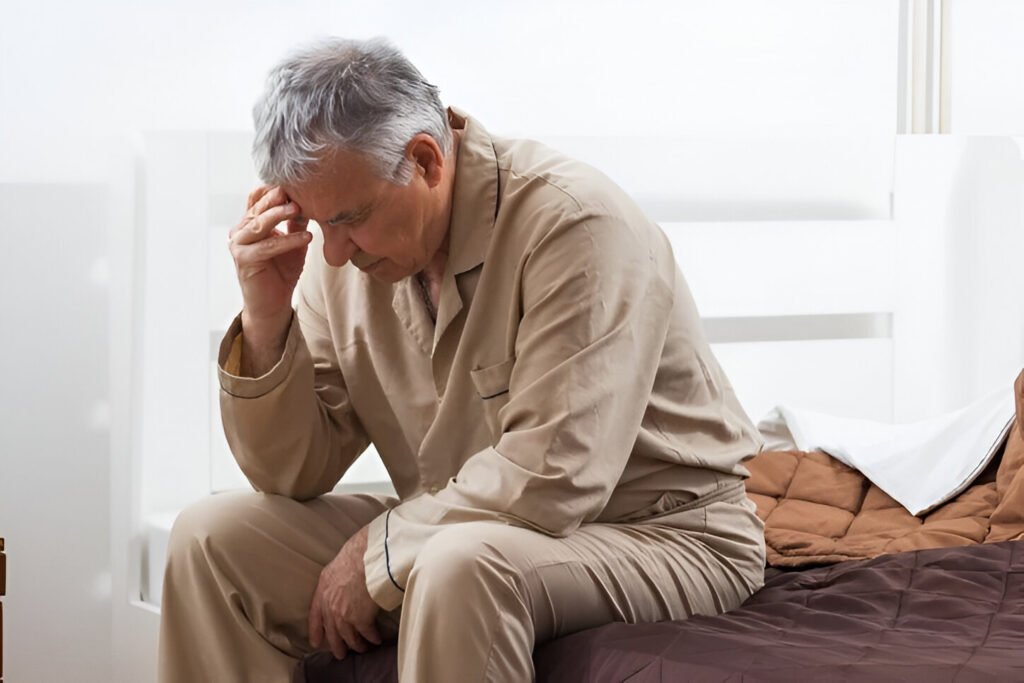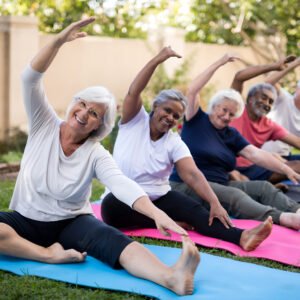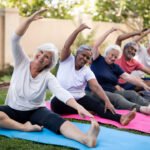
While sedentary peers struggle with mental fatigue, active seniors overcome it.
You have seen them—the energetic elderly people laughing in yoga class, moving briskly around the park, or handling the weight machines with assurance at the gym. Their enthusiasm for life is, well, kind of infectious, and they move and speak with vigor. One may ask: What is their secret?
It turns out that chance and excellent genes are not the only factors. A straightforward fact is being supported by both science and personal accounts: seniors who are active are more adept than their sedentary counterparts in fending off mental exhaustion and cognitive impairment.
However, statistics are not the only part of this story. It has to do with perseverance. One step at a time, one stretch, one dance move at a time, it is about putting yourself first. Additionally, it involves reframing what it
A Quiet Epidemic: Mental Fatigue Among Seniors
Let us begin with the less sunny aspect. Millions of older persons suffer from mental fatigue, a low-grade fog that impairs motivation, memory, and focus. It usually enters covertly. You can not remember why you entered the room. Talks feel more burdensome. It seems more difficult to follow your favorite literature.
Furthermore, this goes beyond simply “getting old.” Isolation and inactivity are associated with a number of these symptoms. The brain needs oxygen, stimulation, and hormones to stay alert, all of which are denied by sedentary lives. Mental energy can be gradually depleted by days of physical inactivity, particularly when combined with feelings of purposelessness or loneliness.
The Brain-Body Connection: Move It to Use It
Here’s the motivating part: exercise is like a spark for the brain and is beneficial for the body as well. Your brain receives more blood flow when you move. Brain-derived neurotrophic factor (BDNF), a protein that promotes neuron development and connectivity, is produced in greater amounts during exercise. Interpretation? Your brain literally creates and maintains the neural circuits that keep you alert through movement.
Studies have repeatedly shown that seniors who maintain an active lifestyle—whether it is through swimming, dancing, tai chi, walking, or strength training—perform better on tests of focus, memory, and problem-solving than those who do not. Additionally, they are less likely to suffer from mood disorders like anxiety and sadness, which can worsen cognitive fog.
The Sedentary Trap (And How to Escape It)
For many seniors, becoming sedentary isn’t a choice—it’s a slow slide. Retirement, mobility challenges, or health setbacks can make it easy to do less and less. But even small changes can break the cycle.
- Start with a walk: Just 10 minutes around the block can wake up both the body and brain.
- Stretch daily: Gentle stretching improves circulation and helps you reconnect with your body.
- Join a class: Movement plus social interaction? That’s double the brain boost.
- Make movement joyful: Dance in the kitchen. Garden. Play with your grandkids. It all counts.
There’s something deeply empowering about choosing to move, even when you don’t have to.

Movement as a Form of Self-Respect
It’s a way of telling yourself: ‘I’m still here. I still matter. I still have things to do, people to love, and a life to live.’
Mental fatigue may try to tell you otherwise, whispering that it’s too late or too hard. But every walk, every stretch, every dance says the opposite: I’m not done yet.
Final Thoughts
Active seniors aren’t just avoiding decline—they’re building resilience. They’re nurturing their minds through movement, connection, and intention. They’re outsmarting the myths that say aging must mean slowing down, forgetting more, or fading into the background.
And the best part? It’s never too late to start.
So if you’re feeling a little foggy, a little tired, a little stuck—it might be time to move. Not perfectly. Not all at once. Just move. Your mind will thank you.
Need a little help getting started? Join our free “Move for Clarity” challenge and get daily encouragement, simple routines, and a community of like-minded folks walking this journey with you.
Let’s keep moving—together.









